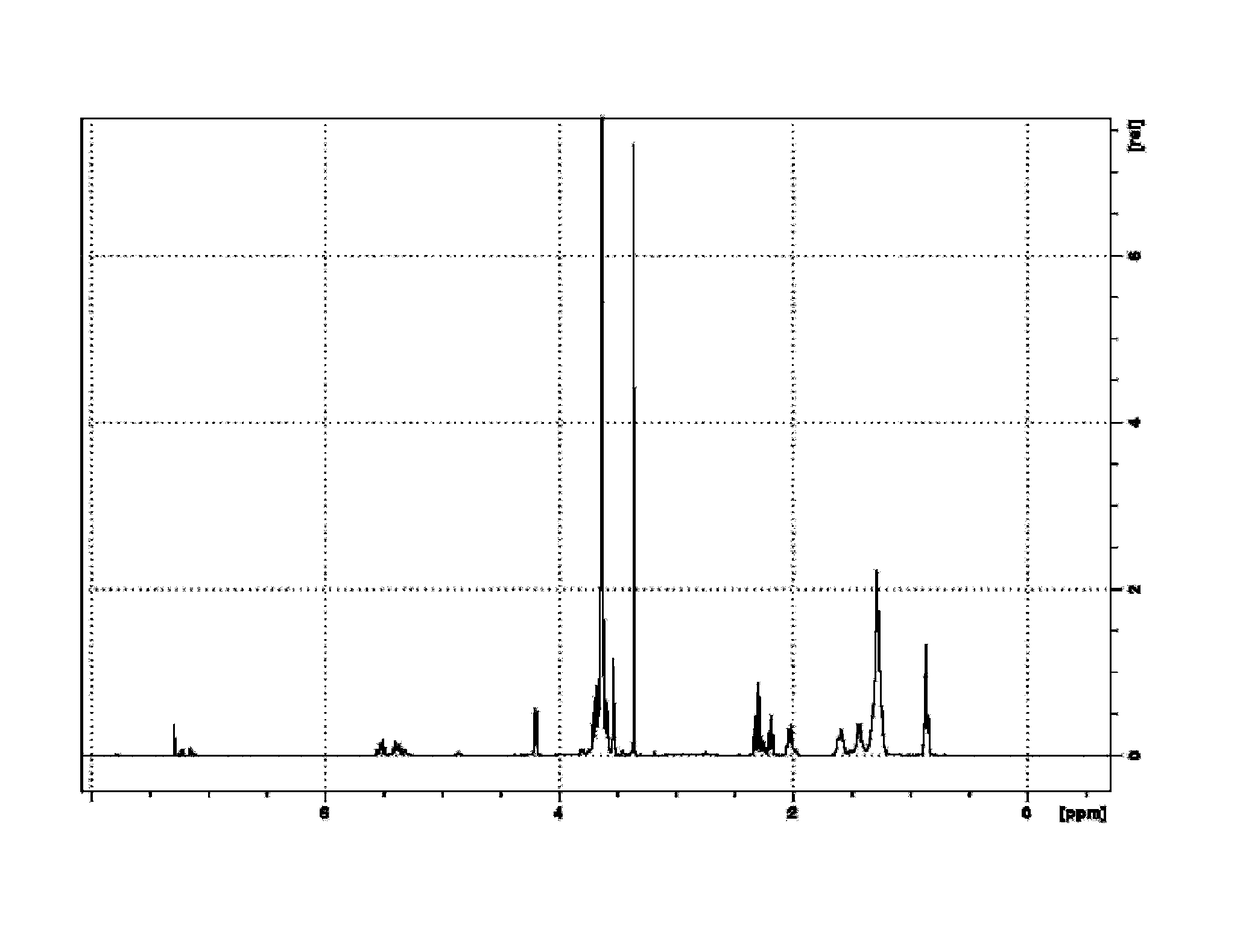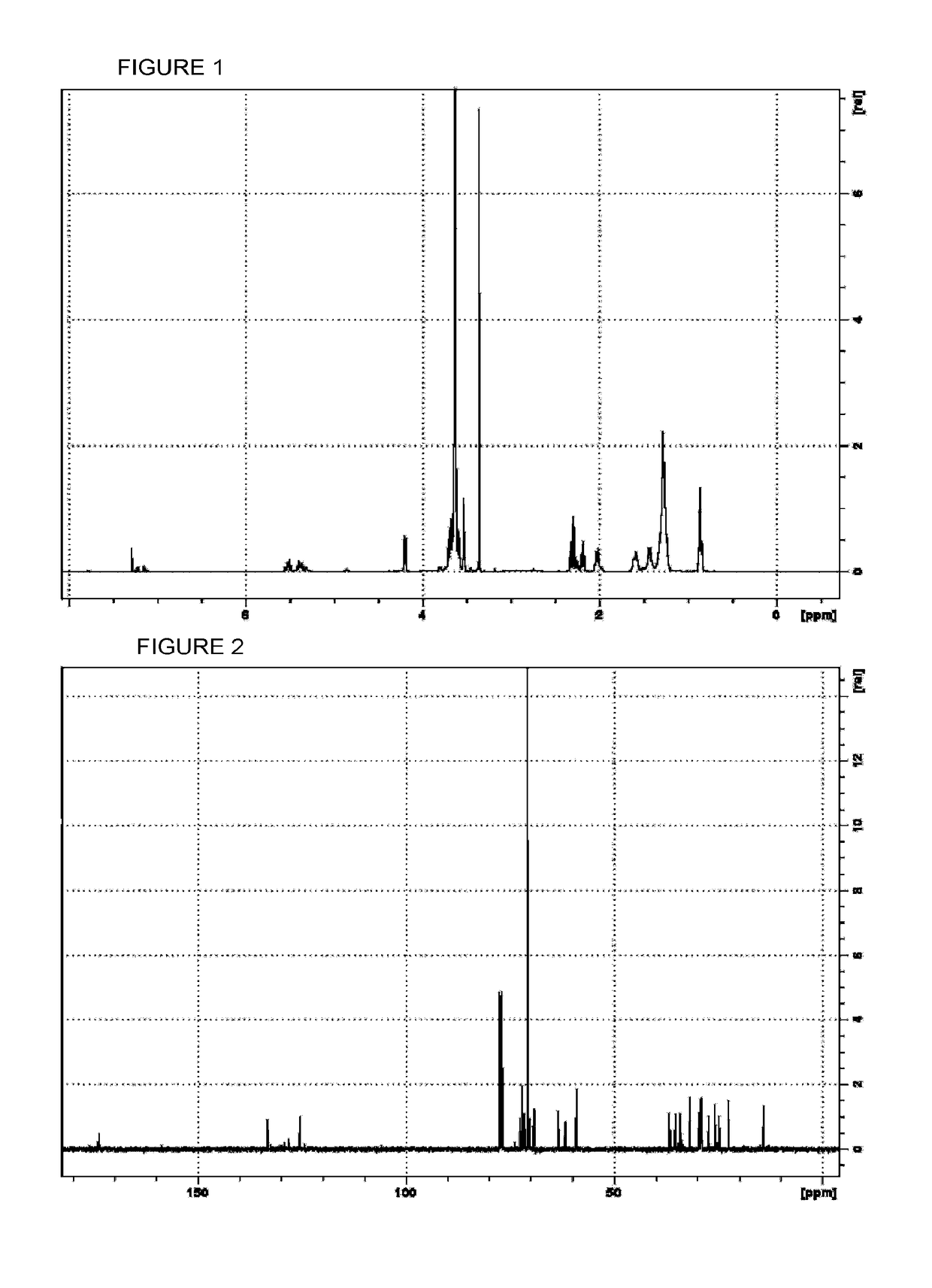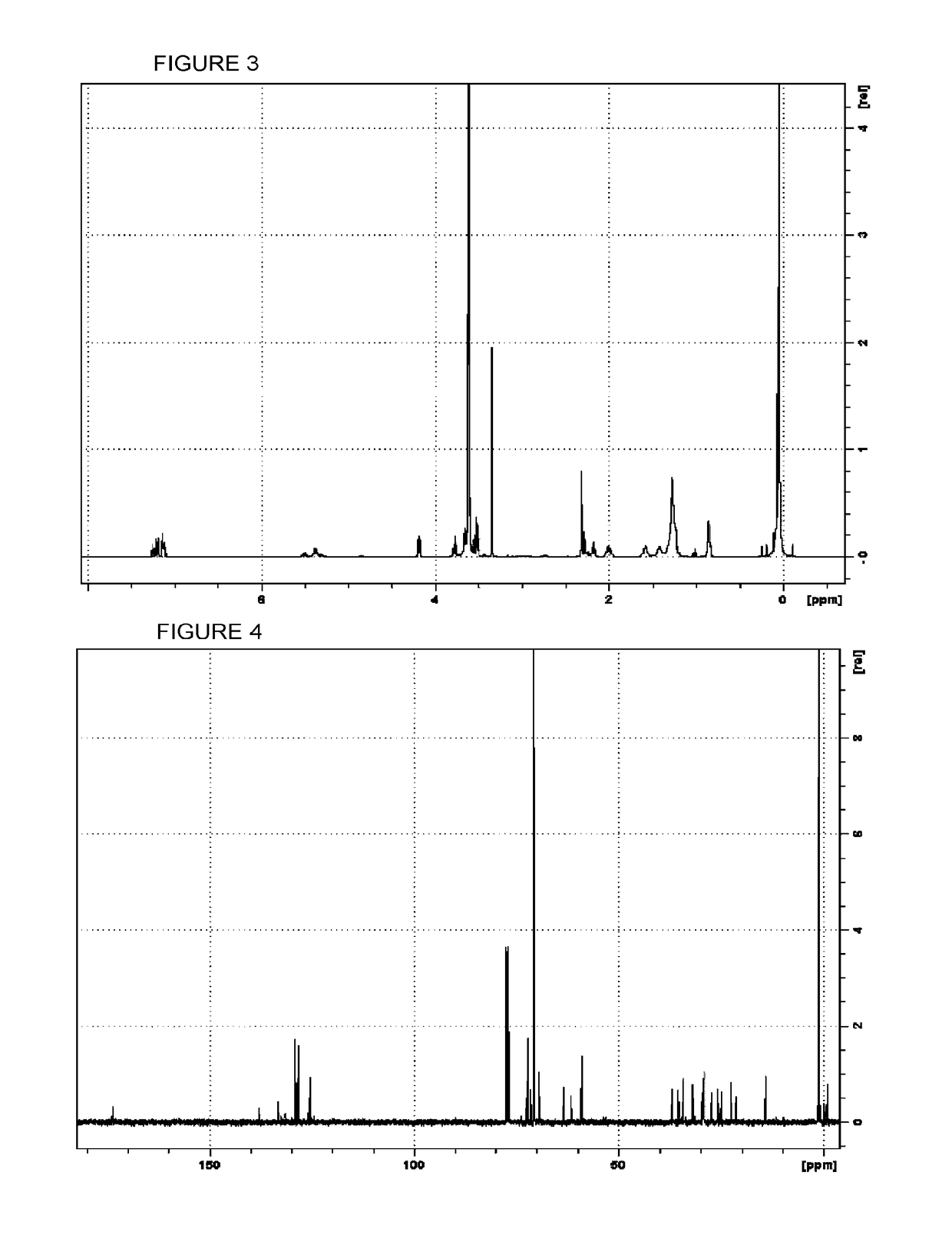Defoaming agent composition
a technology of defoaming agent and composition, which is applied in the direction of foam dispersion/prevention, organic chemistry, chemistry apparatus and processes, etc., can solve the problems of inferior compatibility of hydrocarbon groups and siloxane chains in general surfactants, and inability to ensure sufficient stability accordingly, so as to achieve superior defoaming persistence and favorable water dispersibility
- Summary
- Abstract
- Description
- Claims
- Application Information
AI Technical Summary
Benefits of technology
Problems solved by technology
Method used
Image
Examples
working example
[0207]The present invention is described in detail hereunder with reference to working examples. However, the present invention is not limited to the following working examples. Further, the viscosities mentioned in the working examples are values measured by a Cannon-Fenske viscometer (SO) (type name: No. 500 by SIBATA SCIENTIFIC TECHNOLOGY LTD.) at 25° C.
working example 1
(I) Production of Ricinoleic Acid-polyoxyethylene Condensate
[0208]In a flask equipped with a thermometer, a cooling tube, a dean-stark apparatus and a stirrer, a castor oil fatty acid CO-FA S (by ITOH OIL CHEMICALS CO., LTD., ricinoleic acid 90%) of 218 g and UNIOX M 1000 (by NOF CORPORATION, polyoxyethylene glycol monomethyl ether, weight-average molecular weight 1,000) of 877 g were solved into toluene of 1,096 g. A paratoluenesulfonate monohydrate of 1.4 g was further added thereto as a catalyst, followed by performing heating until a temperature of 120° C. had been reached, and then performing refluxing for 7 hours to distill away water generated as a by-product. Heating was then stopped to allow cooling to take place until a room temperature (25° C.) had been reached. Next, sodium hydrogen carbonate of 7.3 g and sodium sulfate of 14.7 g were added to perform stirring for 2 hours under room temperature, thus completing neutralization and dehydration. Heating was again performed ...
working example 2
(III) Production of Ricinoleic Acid-Polyoxyalkylene Condensate
[0214]In a flask equipped with a thermometer, a cooling tube, a dean-stark apparatus and a stirrer, a castor oil fatty acid CO-FA S (by ITOH OIL CHEMICALS CO., LTD., ricinoleic acid 90%) of 280 g and UNILUBE 50 MB-11 (by NOF CORPORATION, polyoxyethylene (9) polyoxypropylene (11) monobutylether) of 1,184 g were solved into toluene of 1,465 g. A paratoluenesulfonate monohydrate of 1.78 g was further added thereto as a catalyst, followed by performing heating until a temperature of 120° C. had been reached, and then performing refluxing for 7 hours to distill away water generated as a by-product. Heating was then stopped to allow cooling to take place until a room temperature (25° C.) had been reached. Next, sodium hydrogen carbonate of 9.4 g and sodium sulfate of 18.8 g were added to perform stirring for 2 hours under room temperature, thus completing neutralization and dehydration. Heating was again performed until a tempe...
PUM
| Property | Measurement | Unit |
|---|---|---|
| specific surface area | aaaaa | aaaaa |
| temperature | aaaaa | aaaaa |
| temperature | aaaaa | aaaaa |
Abstract
Description
Claims
Application Information
 Login to View More
Login to View More - R&D
- Intellectual Property
- Life Sciences
- Materials
- Tech Scout
- Unparalleled Data Quality
- Higher Quality Content
- 60% Fewer Hallucinations
Browse by: Latest US Patents, China's latest patents, Technical Efficacy Thesaurus, Application Domain, Technology Topic, Popular Technical Reports.
© 2025 PatSnap. All rights reserved.Legal|Privacy policy|Modern Slavery Act Transparency Statement|Sitemap|About US| Contact US: help@patsnap.com



